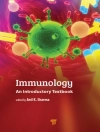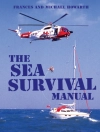The book provides an update of several pathological conditions of the CNS that require neurosurgical treatment.
The different chapters, written by the most eminent international scientists and clinicians in the field of neuroscience, offer a critical assessment of the relevant nosographic entities that are the subject of current scientific debate.
The first chapter critically analyses the new WHO classification of brain tumours, while the second chapter is specifically devoted to intracranial tumours in the first years of life. The technical aspects of neuro-oncological surgery are addressed by two chapters dealing with the suprasellar approach to infratentorial tumours and how to decrease the risk of a specific complication of the surgical management of these tumours in the paediatric population, namely post-operative speech impairment. Hypothalamic tumours with their associated epilepsy and intracranial schwannomas complete the technical surgical section on intracranial tumours. An interesting chapter presents the latest advances in clinical prediction in neurosurgery.
Spinal problems are discussed in two chapters, the first considering evolving concepts on craniovertebral and spinal instability and the second Chiari malformations.
The management of intracranial arachnoid cysts is still a matter of controversy, as demonstrated in a specific chapter of the book. Another chapter deals with subdural haematomas in both adults and children.
Hydrocephalus is treated in two chapters devoted to two post-inflammatory or post-infectious complications leading to specific and difficult-to-treat abnormalities in the CSF circulation.
The final chapter of the book illustrates the rationale behind midface advancement in craniosynostosis.
As with the previous volume in the series, the present volume represents an important contribution to the advancement of neurosurgical specialties.
İçerik tablosu
A critical analysis of the new WHO classification of CNS tumors.- Intracranial Tumors in the First Year of Life.- Supracerebellar infratentorial approach, indications and technical pitfall.- Clinical risk factors for speech impairment after posterior fossa tumour surgery in children.- Trigeminal schwannoma surgery: How to preserve facial sensation.- Evolution of Making Clinical Predictions in Neurosurgery.- Evolving concepts on craniovertebral and spinal instability.- Management of Chiari 1 malformation.- Controversies in the treatment of arachnoid cysts.- The subdural hematomas both in adults and children.- Trapped fourth ventricle: pathophysiology, history, and treatment strategies.-Role of endoscopy in treatment of complex hydrocephalus in children.- Apert Syndrome: Selection Rationale for Midface Advancement Technique.
Yazar hakkında
Prof. Di Rocco is an internationally recognized pediatric neurosurgeon who has performed more that 12, 000 neurosurgical operations on brain and spinal cord tumors, hydrocephalus, arachnoid cysts, craniosynostosis, cerebral and spine malformations (hemimegalencephaly, cortical dysplasia, lipomyelomeningocele, myelomeningocele, spinal lipoma, Chiari type I malformation), neurophacomatoses and epileptic disorders. Since May 2014, Prof Concezio Di Rocco has moved to Hannover, Germany to become the Director of Pediatric Neurosurgery at the International Neuroscience Institute (INI).
He is the main Editor of Child’s Nervous System, the Official Journal of the International Society for Pediatric Neurosurgery, European Journal for Pediatric Neurosurgery, Japanese Society for Pediatric Neurosurgey, Korean Society for Pediatric Neurosurgery, Brasilian Society for Pediatric Neurosurgery.












